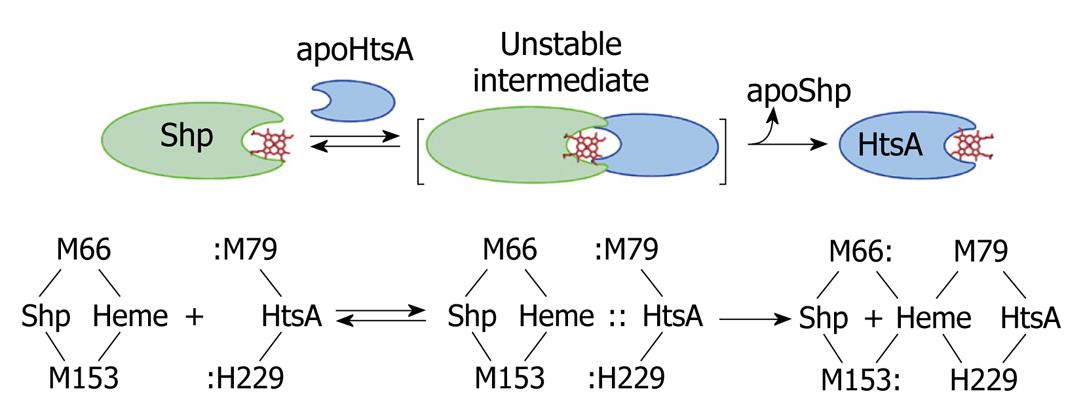Copyright
©2010 Baishideng Publishing Group Co.
World J Biol Chem. Sep 26, 2010; 1(9): 286-290
Published online Sep 26, 2010. doi: 10.4331/wjbc.v1.i9.286
Published online Sep 26, 2010. doi: 10.4331/wjbc.v1.i9.286
Figure 3 A direct heme axial ligand displacement model for the holoShp-holoHtsA reactions.
The side chains of the heme axial ligands, M79 and H229, in apoHtsA are proposed to be inserted into the axial positions of heme in Shp, simultaneously displace M66 and M153 of Shp, and extract heme from the donor. M66/M153 and M79/H229 are the axial ligand residues of the heme iron in Shp and HtsA, respectively.
- Citation: Lei B. Benfang Lei’s research on heme acquisition in Gram-positive pathogens and bacterial pathogenesis. World J Biol Chem 2010; 1(9): 286-290
- URL: https://www.wjgnet.com/1949-8454/full/v1/i9/286.htm
- DOI: https://dx.doi.org/10.4331/wjbc.v1.i9.286









